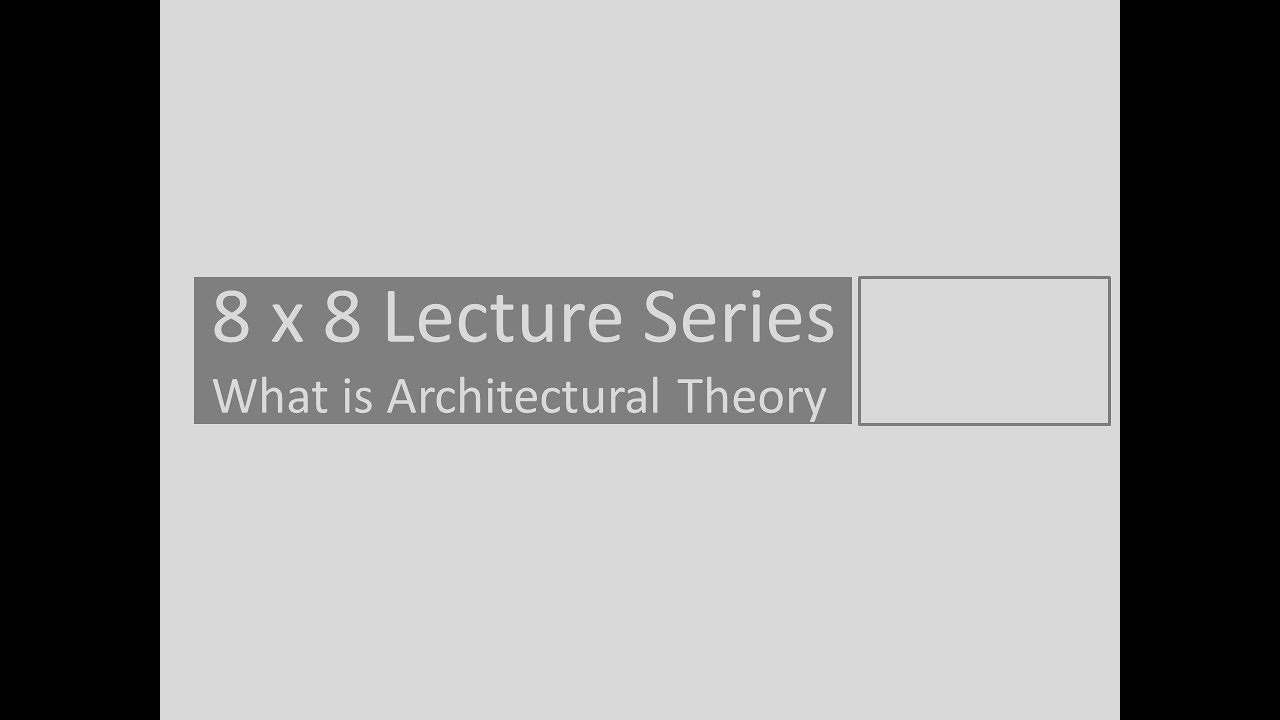The Evolution Of Architectural Theory And Criticism - From Antiquity To Modernism
The evolution of architectural theory and criticism has been a gradual process that has spanned centuries. From ancient times to the modern era, architectural theory and criticism have undergone significant changes, reflecting the changing needs and values of society.
Author:George EvansMar 24, 202312.5K Shares406K Views

The evolution of architectural theory and criticismhas been a gradual process that has spanned centuries. From the ancient times to the modern era, architectural theory and criticism have gone through significant changes, reflecting the changing needs and values of society.
As architecture is a reflection of society, the theory and criticism of architecture are vital in understanding the cultural, social, and political context in which buildings are constructed.
This article will examine the evolution of architectural theory and criticism, tracing its history from ancient times to the present day.
The Evolution Of Architectural Theory And Criticism
Architectural theory has been an important aspect of the field of architecture for centuries, guiding the way architects design and construct buildings.
The origins of architectural theory can be traced back to ancient civilizations, where the construction of buildings was closely tied to religious and cultural beliefs.
In ancient Egypt, for example, the design and construction of buildings were guided by a set of religious beliefs that emphasized the importance of symmetry and order.
The Egyptians believed that buildings were the embodiment of the gods and were designed to reflect the order and harmony of the universe.
Similarly, in ancient Greece, the design and construction of buildings were guided by the principles of balance, symmetry, and proportion, which were believed to be essential for creating a sense of harmony and beauty in the built environment.
Throughout history, architectural theory has continued to evolve, with new ideas and approaches emerging in response to changing social, cultural, and technological contexts.
In the modern era, architectural theory has become increasingly interdisciplinary, drawing on a wide range of fields, from sociology and psychology to engineering and environmental science, to inform the design and construction of buildings.
As we look to the future, it is likely that architectural theory will continue to evolve in response to the pressing challenges of our time, including climate change, social inequality, and the need for more sustainable and resilient built environments

What is Architectural Theory
The Renaissance And The Birth Of Criticism
The Renaissance was a time of great intellectual and cultural growth in Europe, and it had a profound impact on the evolution of architectural theory and criticism.
The rediscovery of classical Greek and Roman architecture during the Renaissance led to a renewed interest in the principles of proportion, symmetry, and harmony, which became central to architectural theory.
One of the most influential figures in Renaissance architecture was Leon Battista Alberti, who wrote the seminal treatise "De re aedificatoria" ("On the Art of Building") in the 15th century.
In this work, Alberti set out the principles of classical architecture, emphasizing the importance of beauty, proportion, and the use of perspective in design. He also emphasized the practical aspects of architecture, such as the need for buildings to be functional and durable.
Alongside the development of architectural theory during the Renaissance came the birth of architectural criticism. The first architectural critics were primarily concerned with aesthetic judgments, and they evaluated buildings based on their beauty, proportion, and harmony.
One of the earliest and most influential architectural critics was Giorgio Vasari, who wrote "The Lives of the Most Excellent Painters, Sculptors, and Architects," a seminal work on Renaissance art and architecture.
Vasari's work helped to establish the importance of architecture as a form of artistic expression, and he set the stage for future generations of architectural critics to evaluate buildings not only on their aesthetic qualities but also on their social, cultural, and environmental significance.
The Renaissance period marked a significant turning point in the evolution of architectural theory and criticism, and it set the stage for centuries of debate and exploration in the field.
As architects and critics continue to grapple with the complexities of designing and evaluating buildings, the legacy of the Renaissance continues to inspire and inform their work.
The Rise Of Modernism
The early 20th century saw a significant shift in architectural theory and criticism, as the modernist movement emerged. Rejecting traditional design principles and embracing new technologies and materials, modernist architects aimed to create functional, efficient, and minimalist buildings.
This shift in architectural philosophy was accompanied by a new form of criticism, one that emphasized the need for buildings to be honest expressions of their function and materials.
Critic and historian Sigfried Giedion's 1928 book "Space, Time and Architecture" was a seminal work that helped to establish the principles of modernist theory and criticism.
The modernist movement dominated architectural discourse for much of the 20th century, shaping the built environment of cities around the world.
However, in recent years, there has been a growing interest in more context-sensitive, sustainable, and humanistic forms of architecture and criticism.
Postmodernism And Beyond
By the 1960s and 1970s, the modernist movement had begun to lose momentum, and a new approach to architecture emerged known as postmodernism.
Postmodern architects sought to reintroduce historical references and cultural context into architectural design, and to reject the idea that architecture should be solely concerned with function and technology.
Since then, there have been a number of other movements and trends in architectural theory and criticism, including deconstructivism, sustainability, and digital architecture.
These reflect the changing social, cultural, and technological contexts in which architecture is practiced, and demonstrate the ongoing evolution of architectural thought and practice.
Renaissance To The Enlightenment
During the Renaissance period, architecture was viewed as an extension of humanism and individualism, leading to the emergence of several architectural styles.
In the Enlightenment era, architecture was seen as an instrument for social reform and a tool for building a better society.
The French architect, Eugène Viollet-le-Duc, introduced the concept of functionalism, which emphasizes the practicality and purpose of the building.
Contemporary Architecture
Contemporary architecture has witnessed a return to functional design principles, while also integrating technology and sustainability.
Architects today are experimenting with innovative materials and techniques, while also emphasizing the social and environmental impact of buildings.
Criticism has shifted towards understanding the cultural, social, and political implications of architecture in the context of globalization and climate change.
People Also Ask
How Has Architectural Theory And Criticism Changed Over Time?
Architectural theory and criticism have evolved significantly over time, reflecting changes in social, cultural, and technological contexts. In the past, architectural theory was primarily concerned with aesthetics and form, while contemporary theory also emphasizes sustainability, technology, and social responsibility.
Who Are Some Famous Architectural Theorists And Critics?
There have been many influential architectural theorists and critics throughout history, including Vitruvius, Leon Battista Alberti, John Ruskin, Walter Gropius, and Jane Jacobs.
How Has Technology Influenced Architectural Theory And Criticism?
Advances in technology have had a significant impact on architectural theory and criticism. New materials and construction techniques have allowed for new forms and structures, while digital tools have transformed the design process.
What Is The Relationship Between Architectural Theory And Practice?
Architectural theory and practice are closely related, with theory often informing and shaping practice. Architects use theory to guide their design decisions, while practice helps to refine and test theoretical ideas.
What Is The Role Of Criticism In Architectural Discourse?
Criticism plays an important role in architectural discourse by providing a platform for debate and reflection on design ideas and practices. Criticism can help to identify strengths and weaknesses in design approaches and contribute to the ongoing evolution of architectural theory.
Final Words
The evolution of architectural theory and criticism has been a dynamic and ongoing process throughout history.
From the earliest expressions of form and function to the more recent emphasis on sustainability and social responsibility, architecture has continually adapted to changing cultural, economic, and environmental contexts.
Criticism has played a vital role in shaping architectural discourse, promoting innovation, and providing a framework for evaluating the social and cultural implications of built environments.
By examining the evolution of architectural theory and criticism, we gain a deeper understanding of the complex relationships between architecture, society, and the natural world.
As we look to the future, it is clear that architecture and criticism will continue to evolve in response to new challenges and opportunities, creating spaces that are not only functional and aesthetically pleasing but also sustainable, equitable, and socially responsible.

George Evans
Author
George Anderson, an exceptional architectural designer, envisions and brings to life structures that transcend the realm of imagination. With an unwavering passion for design and an innate eye for detail, George seamlessly blends form and function, creating immersive spaces that inspire awe.
Driven by a deep appreciation for the interplay of space, light, and materials, George's innovative approach redefines the possibilities of architectural design. His visionary compositions leave an indelible mark, evoking a sense of wonder and transforming the built environment.
George Anderson's transformative designs and unwavering dedication continue to shape the architectural landscape, pushing the boundaries of what is possible and inspiring generations to come.
Latest Articles
Popular Articles